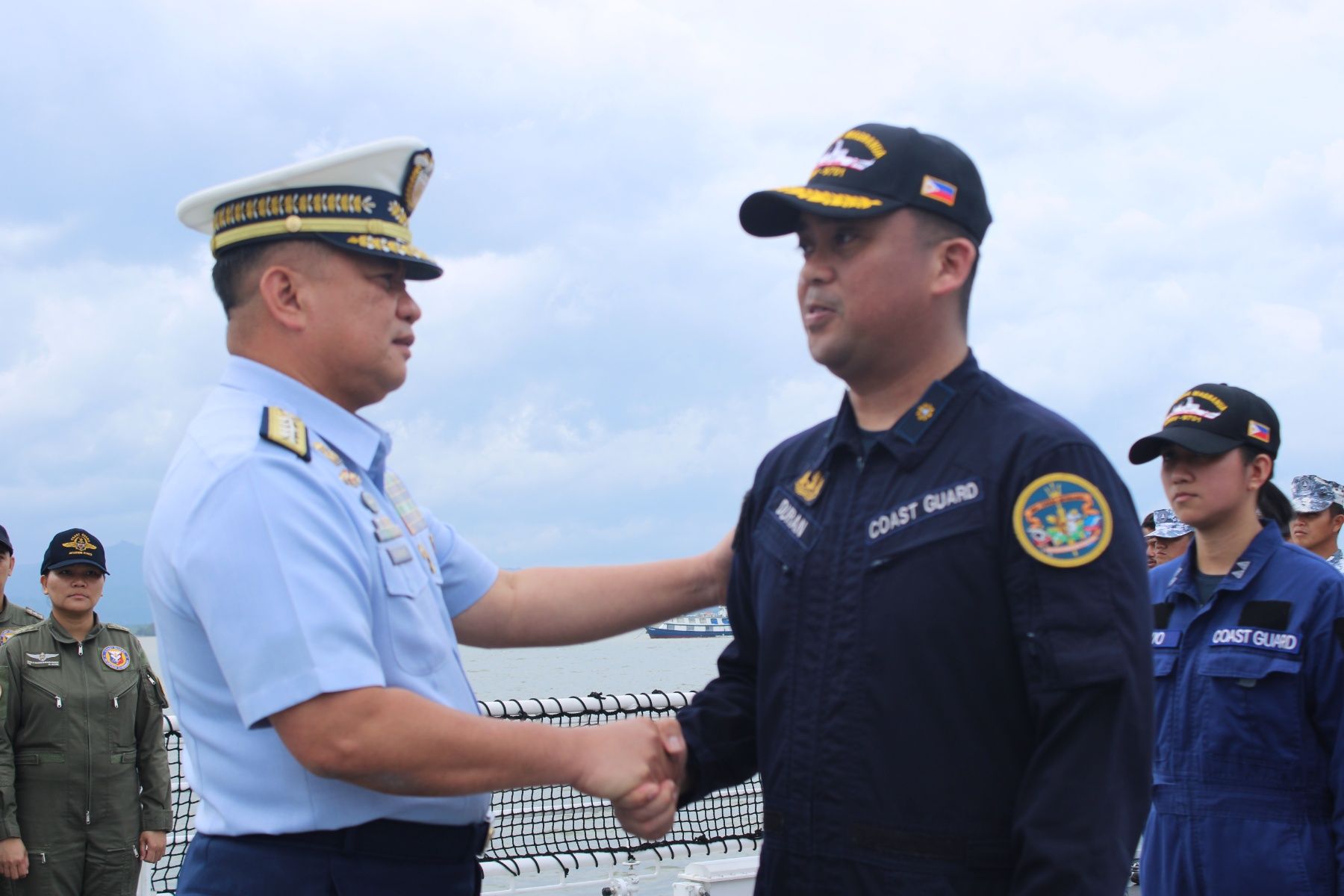Driven to extreme hunger, thirst: BRP Teresa Magbanua crew's ordeal bared

The crew of the BRP Teresa Magbanua (MRRV-9701) was driven to extreme hunger and thirst due to the “illegal” blocking maneuvers conducted by Chinese maritime forces during a resupply mission to Escoda (Sabina) Shoal last month, to the point that the sailors had to drink rainwater and water drops produced from airconditioning units aboard the ship, and eat “lugaw” (rice porridge) as supply was scarce.
The Philippine Coast Guard (PCG) bared this on Monday, Sept. 16, saying this was one of the main reasons why BRP Teresa Magbanua retreated from Escoda Shoal despite the eagerness of the crew, led by MRRV-9701 commanding officer Lt. Cdr. Efren Duran, to hold the line against suspected reclamation activities and illegal poachers in the area.
When BRP Teresa Magbanua arrived at the Puerto Princesa Port in Palawan on Sunday, Sept. 15 – five months since she was deployed last April 15 – four crew members had to be medically evacuated via stretcher while wearing dextrose as they were suffering from dehydration, acute gastroenteritis, gouty arthiritis, electrolye imbalancem and heat exhaustion.
“From April, May, June, July we were able to conduct resupply missions for our personnel. It was only in August where the China Coast Guard started becoming more aggressive and prevented our coast guard vessels, particularly the 44-meters, to do the resupply for our personnel. That means that starting [in] August, that was when the problem on supplies began,” Tarriela shared.
The PCG’s resupply mission to Escoda Shoal on Aug. 26 saw China Coast Guard (CCG) and People’s Liberation Army-Navy (PLA-N) vessels swarming the 44-meter ships BRP Cabra and BRP Cape Engaño, leading to a failed mission. Although an airdrop mission went successful two days later, this was still not enough to quench the thirst and ease the hunger of the crew.
“Ang kinain lang nila for almost three weeks ay lugaw (They ate only rice porridge for almost three weeks),” Tarriela said.
With regards to the water supply of the crew, the PCG said that BRP Teresa Magbanua is a “modern vessel dam,” which means it can generate fresh water from seawater using a desalinator machine.
“But because of a prolonged stay and usage of the desalinator machine, it would require brand new filters for them to convert salt water to potable drinking water. Because of the prolonged usage, it no longer produces fresh water,” the PCG spokesman said.
“They went through to the point that for more than one month now, ang iniinom na lang nilang tubig came from the rainwater (the water that they were drinking was rainwater),” he stated.
“Sa mga pagkakataon na walang ulan (In times that there are no rain), they even have to gather water doon sa airconditioning units na napoproduce (water produced from airconditioning units) and they’re just going to boil it and that will be used for drinking and also for cooking,” he bared.
Aside from extreme hunger and thirst, BRP Teresa Magbanua had to go back to port because of the bad weather in Palawan and the entire WPS due to the enhanced effects of southwest monsoon (habagat), and to fix the damage she sustained due to ramming by CCG vessel last Aug. 31.
Replacement coming in
The good news is that the PCG said it will deploy one of its ships back to Escoda Shoal to replace BRP Teresa Magbanua as it insisted that the Philippines has not lost the key low-tide elevation.
Tarriela said the PCG “can deploy our vessels anytime we’d like within the vicinity of Escoda Shoal” although he refused to give details what ship will replace BRP Teresa Magbanua and when the voyage will take place as these are operational details that may jeopardize their mission.
“I would like to highlight [that] we have not lost anything. We can still patrol and maintain our presence in Escoda Shoal,” he said.
“It is important for us to highlight and emphasize that Escoda Shoal is a low-tide elevation, has a distance of 72 nautical miles from Palawan, and it is within our own exclusive economic zone. We have sovereign rights over these waters. The Philippine Coast Guard, together with the Armed Forces of the Philippines, will never abandon our sovereign rights over these waters. We are still going to sustain our presence in these waters,” he said.
Relatedly, Tarriela emphasized that the retreat of BRP Teresa Magbanua from Escoda Shoal could not be compared to the standoff between the Philippines and China in Bajo de Masinloc (Scarborough/Panatag Shoal) in 2012, where China seized control of BDM when Philippine Navy ships left the shoal.
First, he said Escoda Shoal has a total area of 137 square kilometers which is as big as Manila, Caloocan, Navotas and Malabon combined. It has two lagoons in its eastern and western side with multiple entry points, making it easy for the PCG to go inside, whereas Bajo de Masinloc only has one entry point at the southeast entrance of its lagoon which is now closely guarded by CCG and PLA-N vessels.
“Right now, there is no reason for us to be blocked. We can go to Escoda Shoal with such total area and it’s almost impossible for the Chinese government to block our intent to patrol the entire vicinity of Escoda Shoal,” Tarriela said.